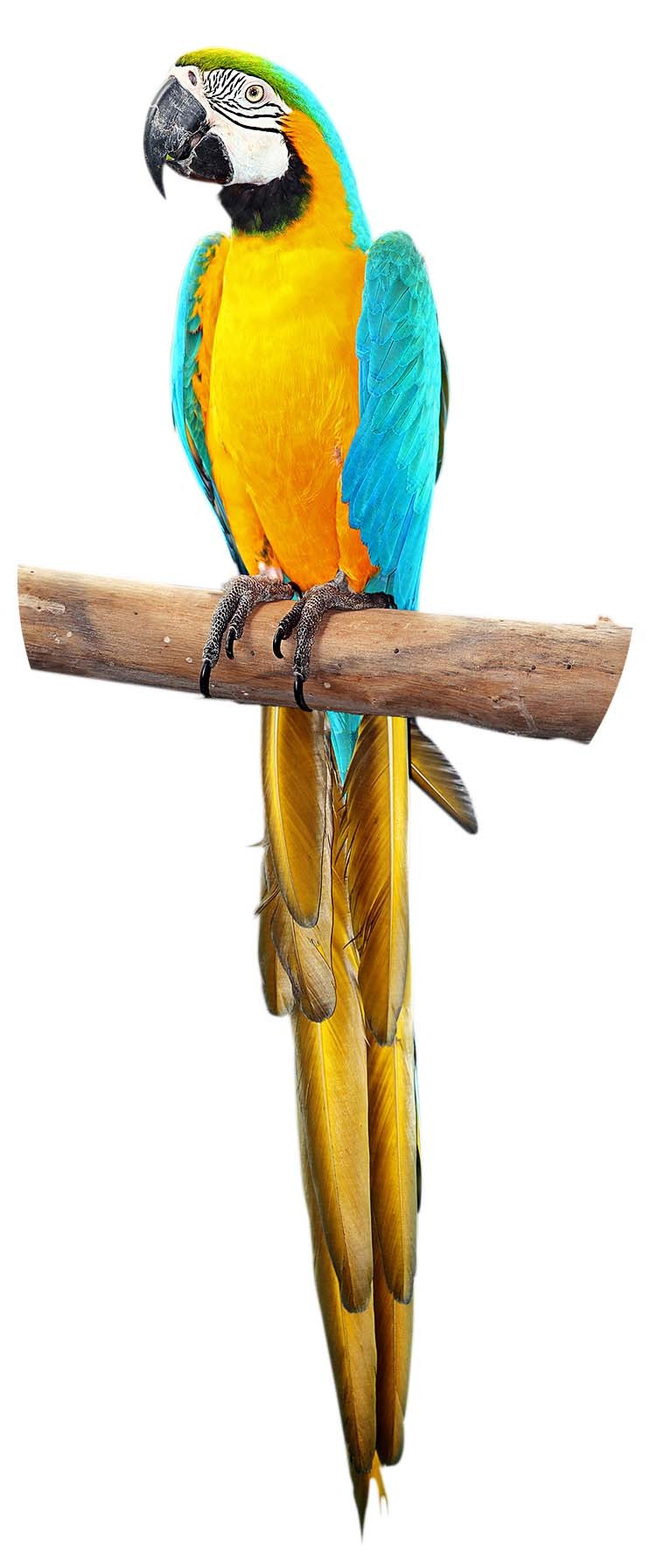Blue-and-yellow Macaw
A species of Typical Macaws Scientific name : Ara ararauna Genus : Typical Macaws
Blue-and-yellow Macaw, A species of Typical Macaws
Botanical name: Ara ararauna
Genus: Typical Macaws
Content
Description People often ask General Info
 Photo By Hans Hillewaert , used under CC-BY-SA-4.0 /Cropped and compressed from original
Photo By Hans Hillewaert , used under CC-BY-SA-4.0 /Cropped and compressed from original Description
Due to its brilliant plumage, intelligence, and ability to talk, this large parrot is extremely popular as a pet. Native to rainforests, the blue-and-yellow Macaw feeds on a wide variety of fruit, but it nests strictly in palm trees. When unable to find a perfect nesting site, it tends to steal other birds' nests and kill the residents. These parrots mate for life and live in pairs or small groups. Thanks to the extremely powerful bill, they are able to crack open the hardest nuts.
Size
81 - 91 cm
Life Expectancy
30-35 years
Nest Placement
Cavity
Feeding Habits
Blue-and-yellow Macaw primarily feed on a variety of seeds, nuts, and fruits, often foraging in trees. They have strong beaks for cracking nutshells, with a preference for certain seeds that may involve intricate feeding behaviors.
Habitat
Blue-and-yellow Macaw is typically found in various types of forests such as seasonally flooded várzea forests, gallery forests, and deciduous forests away from water bodies. Their habitat also includes Mauritia palm stands in savannas, indicating an adaptation to both forested and open areas. These birds generally inhabit lowland regions up to 500 meters elevation, but they have also been observed at heights up to 1500 meters in the Peruvian Andes. The geographical range of blue-and-yellow Macaw is broad, covering tropical and subtropical regions of South America.
Dite type
Omnivorous
People often ask
General Info
Feeding Habits
Bird food type
Distribution Area
This species occurs in Venezuela, Peru, Brazil, Bolivia, Ecuador, and Paraguay. The range extends slightly into Central America, where it is restricted to Panama. Although they were nearly wiped out in Trinidad due to human activity during the 1970s, a recent programme of reintroduction has proved successful. A small breeding population descended from introduced birds is found in Puerto Rico, and another has inhabited Miami-Dade County, Florida, since the mid-1980s. 
Species Status
The blue-and-gold macaw is on the verge of being extirpated in Paraguay, but it still remains widespread and fairly common in a large part of mainland South America. The species is therefore listed as Least Concern by BirdLife International. It is listed on CITES Appendix II, trade restricted. 
Scientific Classification
Phylum
Chordates Class
Birds Order
Parrots Family
Parrots Genus
Typical Macaws Species
Blue-and-yellow Macaw